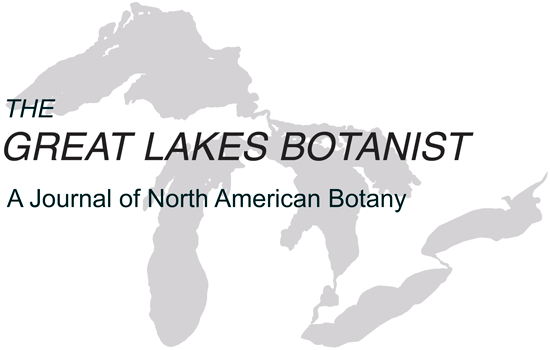About
The Great Lakes Botanist (formerly The Michigan Botanist through Volume 55, online ISSN 2166-4374), established in 1962, is the open access, peer-reviewed, quarterly journal of the Michigan Botanical Society. There are no article processing charges or page charges. Authors of articles submitted for publication retain full, unrestricted, copyright and publication rights in their published articles. The journal publishes papers on the botany of North America generally, but maintains the Great Lakes region as one area of special focus. The Great Lakes region is defined as the entirety of the states and provinces bordering any of the Great Lakes, that is, Michigan, Wisconsin, Minnesota, Illinois, Indiana, Ohio, Ontario, Pennsylvania, and New York. Articles may be submitted to the editor at the email address given at the bottom of this page. The Great Lakes Botanist publishes papers on all aspects of the natural history of plants of North America north of Mexico, including systematics, floristics, ecology, conservation, botanical history, restoration, and other areas of organismal botany. Plant groups include vascular plants, bryophytes, fungi, and algae.
The Great Lakes Botanist is published under a Creative Commons Non-Commercial, No Derivative license (CC BY-NC-ND). Under this license, articles may be copied, distributed, or displayed with attribution only for non-commercial purposes. Derivative works or remixes are not permitted.
The publication is hosted online through the journal services of Michigan Publishing, the primary academic publisher of the University of Michigan.
Membership in the Michigan Botanical Society is open to anyone interested in its aims:
- Conservation of all native plants.
- Education of the public to appreciate and preserve plant life.
- Sponsorship of research and publication on plant life.
- Sponsorship of legislation to promote preservation of Michigan native flora.
- Establishment of suitable sanctuaries and natural areas.
- Cooperation in programs concerned with the use and conservation of all natural resources and scenic features.
Individuals wishing to subscribe to the print edition should go to the Membership Page. Institutions should go to the Subscription Page.
